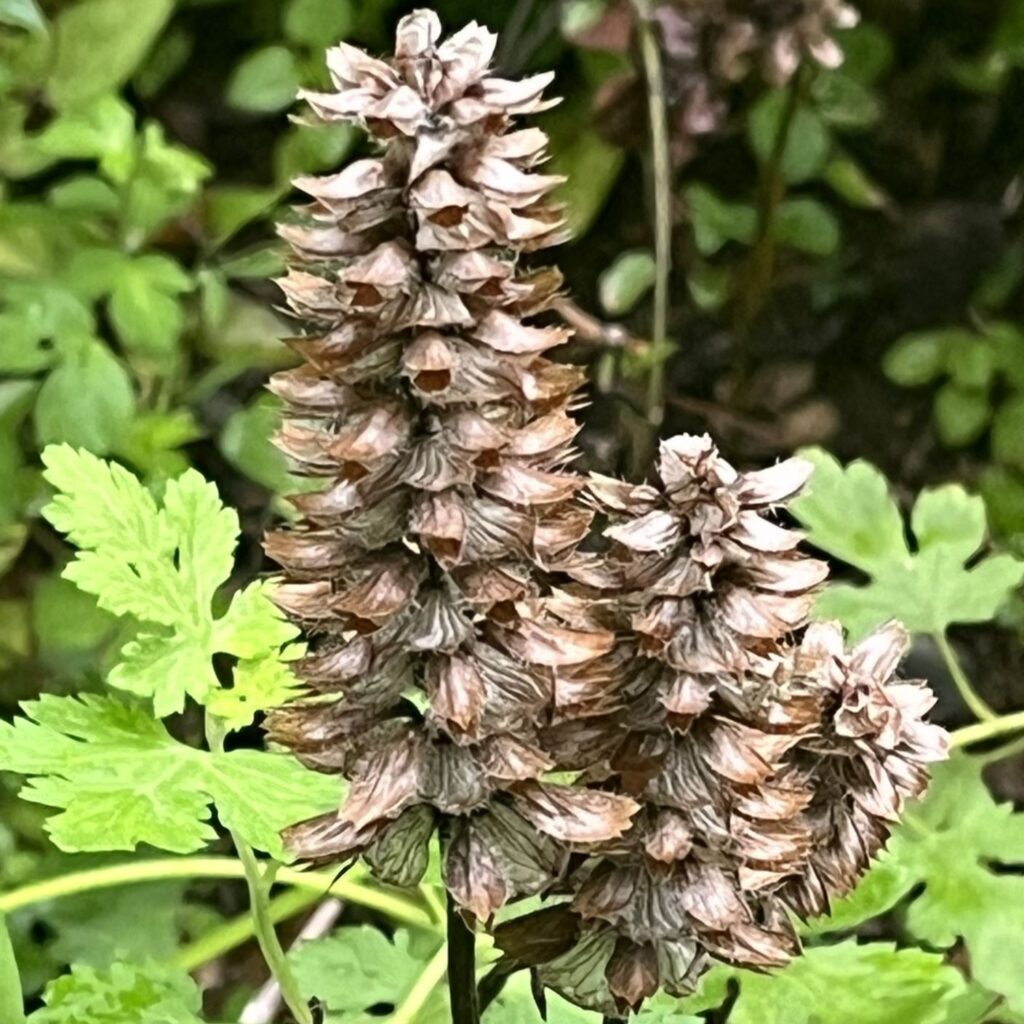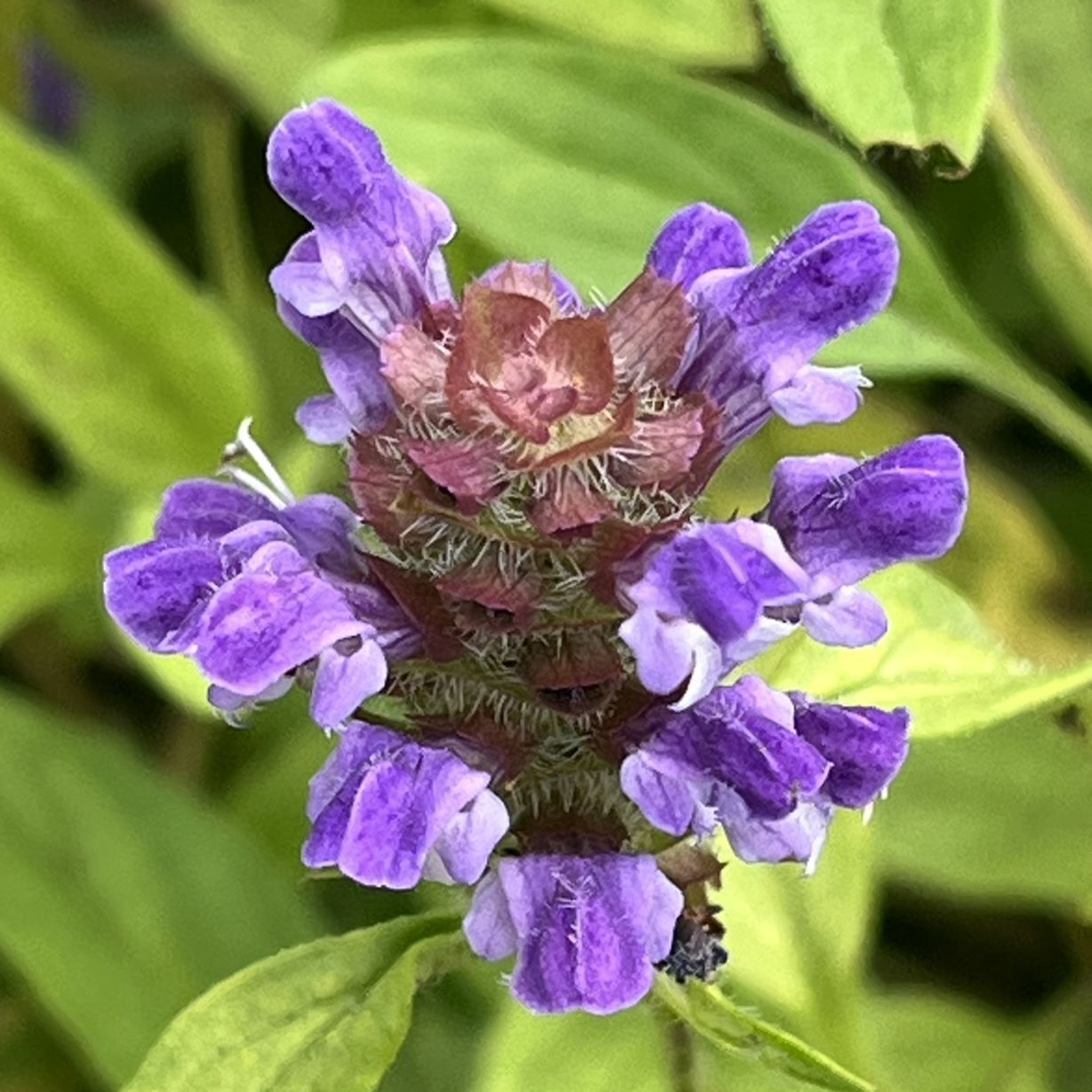ウツボグサは古くからの薬草です。花は唇形で、上唇が庇のように張り出し、下唇が3裂。茎先で穂状に輪生し、下から順に咲き上がります。
Selfheal is an ancient medicinal herb. The flower is lip-shaped, with the upper lip overhanging like an eaves and the lower lip three-lobed. It grows in a whorl on the inflorescence at the end of the stem, and blooms from the bottom up.
【仮名】ウツボグサ, カゴソウ
【和名】靫草, 夏枯草
【英名】Selfheal
【学名】Prunella vulgaris
【誕生】06/ 16, 09/ 19
【開花】05, 06, 07, 08月
【花色】Purple, Violet
ウツボグサ
ウツボグサの概要

ウツボグサはシソ科の多年草です。原産地は東アジアで、日本では北海道から本州、四国、九州まで、国外では朝鮮半島、中国、台湾に分布し、陽当たりの良いところで群生。原産地が欧州の「西洋靫草」とともに古くからの薬草で、英名セルフヒールも「自然治癒」という意味です。
ウツボグサの名前

ウツボグサの和名の由来は矢を収める筒状の容器「靫」に花穂が似ているから。靫によって武士は矢を雨に濡らすことなく弓に番えました。一方、ラテン語の属名プルネラはドイツ語の「扁桃腺炎」に由来し、種小名ブルガリスは「ありふれた」という意味。昔から身近な薬草でした。
ウツボグサの姿形

ウツボグサの茎は4稜で、下の方が匍匐しながら節からひげ根を伸ばし、上の方が直立。葉は対生し、広披針形に浅い鋸歯が入ります。花は唇形で、上唇が庇のように張り出し、下唇が3裂。茎先で穂状に輪生し、下から順に咲き上がります。萼の中で光沢のある褐色の4分果を形成。
ウツボグサの利用

ウツボグサは今でも生薬「夏枯草」として様々な疾患に用いられます。花穂を干して刻んで煎じて飲めば利尿や消炎、暑気払いに、葉を生のまま揉んで塗布すれば湿疹や汗疹に、全草を焼酎に漬ければ滋養強壮に。若葉はお浸しや和えもの、花は酢のものや天ぷらなどで食べられます。
Selfheal

Selfheal is a perennial plant of the Lamiaceae family. It is native to East Asia. In Japan, it is distributed from Hokkaido to Honshu, Shikoku, and Kyushu, and overseas to the Korean Peninsula, China, and Taiwan. It grows in clusters in sunny places. Along with “Common Selfheal,” which is native to Europe, it is an ancient medicinal herb. The English name Selfheal also means “natural healing.”
The Japanese name Selfheal means “a cylindrical container for storing arrows,” because the shape of the inflorescence is similar. With this container, samurai could nock their arrows on their bows without getting them wet in the rain. Meanwhile, the Latin genus name Prunella comes from the German “tonsillitis,” and the specific name vulgaris means “common.” It has been a familiar medicinal herb since ancient times.
The stem of Selfheal is four-sided. The lower part of the plant creeps and extends fibrous roots from the nodes, while the upper part stands upright. The leaves are opposite and broadly lanceolate with shallow sawtooth. The flowers are lip-shaped, with the upper lip protruding like an eaves and the lower lip three-lobed. They grow in whorls on the inflorescence at the end of the stem, and bloom from the bottom up. They form glossy brown quartos inside the calyx.
Selfheal is still used as a herbal medicine for various diseases. The inflorescences are dried, chopped, boiled and drunk as a diuretic, anti-inflammatory and heat-relieving agent, the leaves are rubbed raw and applied to treat eczema and prickly heat, and the whole plant is soaked in shochu for nutritional tonic. The young leaves can be eaten in a soaked or mixed dish, and the flowers can be eaten in vinegar or tempura.



